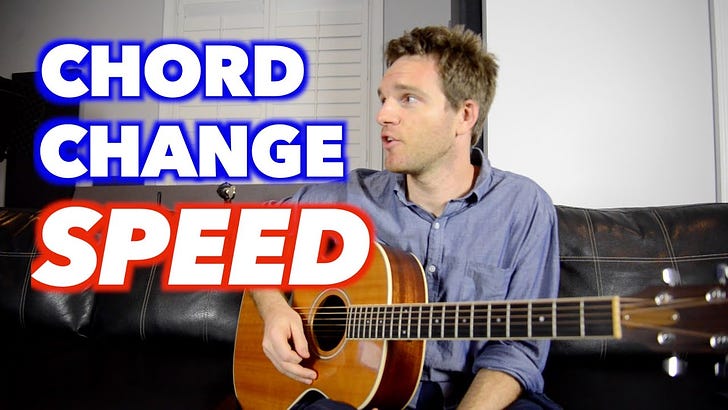Today we’ll make a couple of assumptions and see where they take us!
First, you have your acoustic guitar and maybe some accessories and a beginning guitar book and some YouTube videos to watch. Perfectly normal, those will get you started, and you’re following the path many, if not most of us, followed when just starting out.
Some things to think about as you go along:
First (and I really can’t stress this enough), have your guitar professionally “set up” at your locally owned guitar shop. What does a guitar set up entail? It’s first an inspection of the guitar, looking for neck problems, a fretboard that’s flat and not twisted, cracks in the body or top (cracks in the finish that don’t extend into the wood won’t hurt tone, but they can be a little disconcerting to look at), the bracing is solid, and if your guitar has electronics, that they work. And…
Strings. String choices can be a little daunting. If you’ve played guitars with different string gauge sets (whaaaat? - see a good, easy to understand source for information on string sizes here: https://zinginstruments.com/acoustic-guitar-string-gauges/ [found via web search, ©️2021 Zing Instruments]) you may already know what size you want to start out with. For reference only, I play with Lights or Custom Lights - but that’s partly due to the fact that I play fingerpicking style almost exclusively now.
Tuning your strings is fairly easy now: use a tuner that clips to your guitar’s headstock, or a tuning app for guitar on your phone or pad (there are free apps - the tuning clips cost, but I find the less expensive ones work just as well) - they’ll normally have a gauge type display that tells you if you’re sharp (needle to the right) or flat (needle to the left) or in tune (needle centered), but some use colors or numbers.
For starting out, you’ll probably strum and heavier strings up to mediums are ok. In any case the fingertips of your fretting hand are going to be sore for the first few days or a week as you build up callouses on your fingertips (this is also a great argument for regular practice- your callouses can go “soft” fairly quickly). Now is also a really good time to trim the fingernails of your fretting hand as short as you can stand - nails will prevent you from depressing the string fully and give your notes a “dead string” sound. Starting out with good fretting technique will lessen frustration later. Good fretting technique starts out with your fingertips up to your first knuckle pressing straight down on the string as close behind the fret as possible. (Here’s a pretty good article with illustrations about fretting hand and wrist technique: https://www.libertyparkmusic.com/5-must-know-fretting-techniques-for-beginner-guitarists/ Found via web search ©️ 2021 Liberty Park Music)
So, your guitar is set up and probably has a fresh set of strings - let’s play!! But where to begin? Assuming you’re new to playing and know few, if any, chords, I’d start (as most of us do) with these four chord shapes:
The CMajor chord is a great, and common, place to start:
Here’s a great reference to explain how to read a chord diagram: https://guitaralliance.com/2013/02/how-to-read-a-chord-diagram/ (found via web search, no copyright on the page, I’ll assume by Guitar Alliance, though)
My go-to source for chord diagrams is Jguitar.com - I use it all the time to look up finger placement for chords - and especially for easier ways to play chords I’m less familiar with!
If you’re comfortable with the CMajor chord, try learning these 3 chords as well:
DMajor
GMajor
Aminor
With these 4 chords, you’ll be able to play tons of songs in many different genres!
I’m going to close today with a “what next?” to give you a week to work on these things - we covered a lot today!!
After you can play the chords above, and any others you know or want to learn, the next step is to learn to change chords smoothly which will lead to how to actually play songs: changing chords on the beat!
Here’s the YouTube video that changed my musical life:
I don’t have a financial connection with Sean Daniels (nor the creators of any of the other links above) and I’m implying no endorsement- but I will emphatically add I dig his approach to sharing his insight into learning guitar - he always makes me laugh a little while I learn a lot.
That’s all for this week - probably more than enough actually - but I hope it helps you along your way! See you here next week!!
Cheers
Michael Acoustic









Great info!! Keep it going!!!